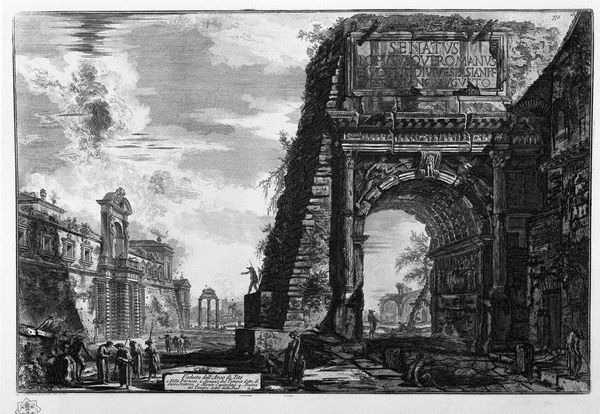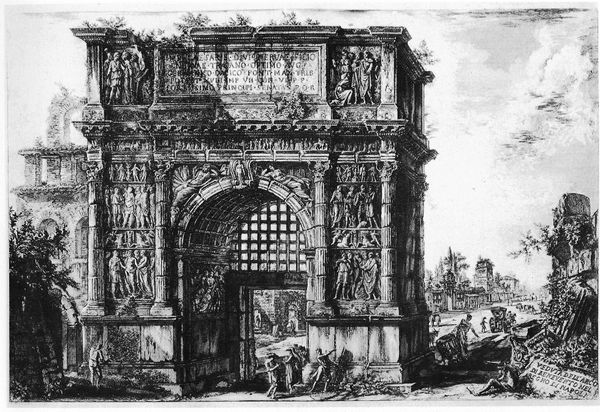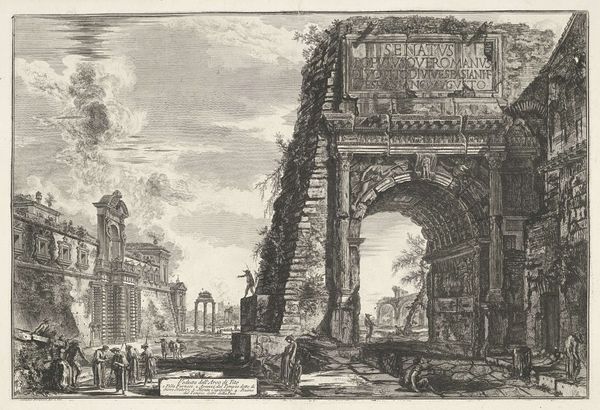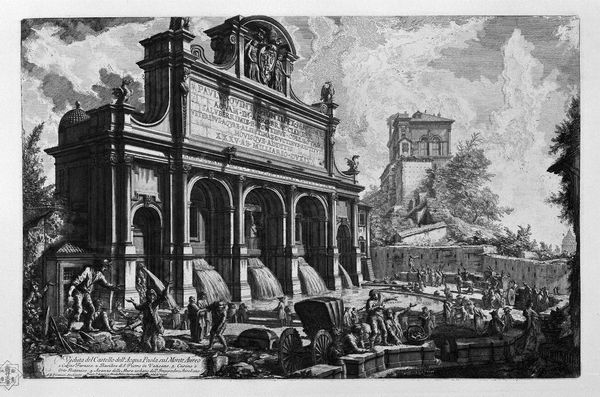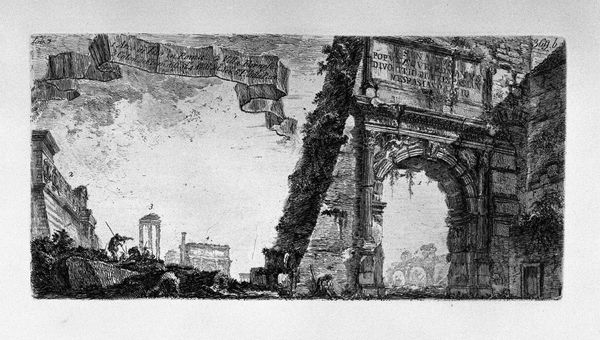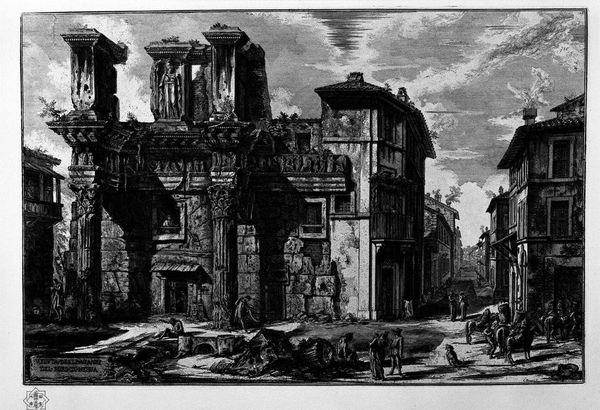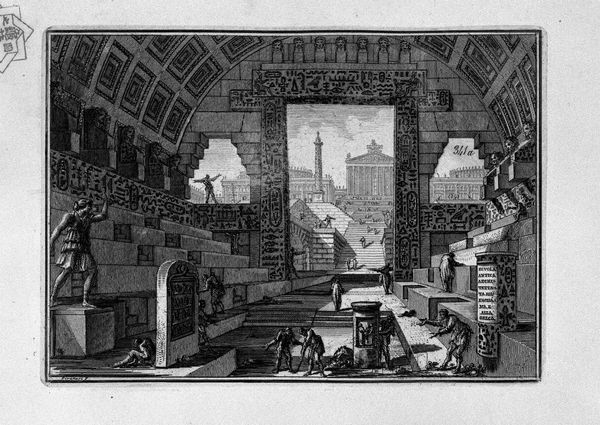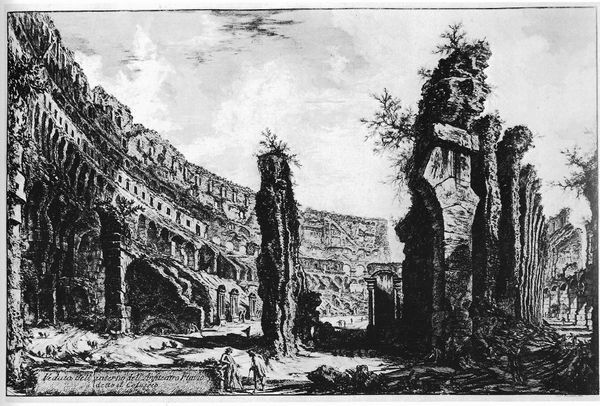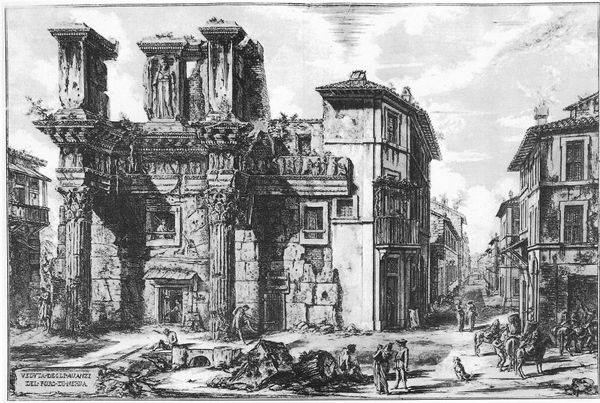
graphic-art, print, etching, engraving
#
graphic-art
# print
#
etching
#
classical-realism
#
perspective
#
form
#
romanesque
#
line
#
cityscape
#
history-painting
#
engraving
Copyright: Public domain
Editor: This is one of Giovanni Battista Piranesi’s *Vedute di Roma*. It’s an etching, maybe with some engraving as well. There’s something both grand and desolate about the image, this contrast between the monumental architecture and its ruined state. What strikes you most about it? Curator: The persistence of Rome, despite time’s relentless assault, is key. Piranesi’s skill wasn’t just in rendering perspective, but in evoking a sense of layered history, wouldn't you agree? He's showing us not just stones, but the weight of cultural memory. Editor: Yes, definitely. The etching is so detailed. Is there a particular element that stands out in relation to cultural memory? Curator: The fragmented inscription atop the arch, perhaps? Consider how these remnants become powerful symbols. The past, though incomplete and broken, continues to speak to us. What does that incomplete-ness tell us? Editor: That even fragments can tell stories. And that our understanding of history is always partial, interpreted. Curator: Precisely. The layering, the decay...it all becomes part of Rome's evolving narrative. The arch as a symbol of triumph is subverted by the ruins. Editor: It makes you think about the impermanence of even the most powerful empires. And the enduring power of art to document and question. Curator: Indeed. The visual vocabulary of ruins invites us to contemplate our place within this continuum. Every line etched is a question posed to the future.
Comments
No comments
Be the first to comment and join the conversation on the ultimate creative platform.
